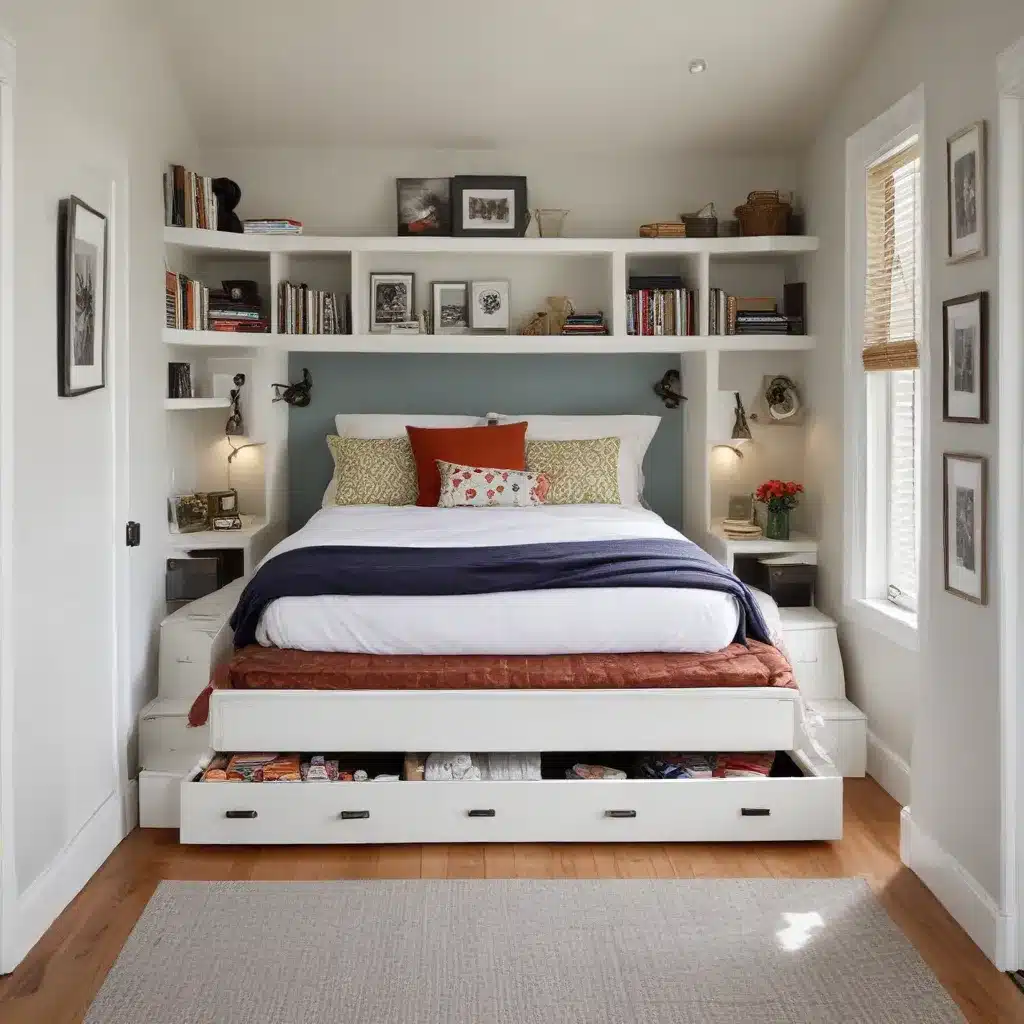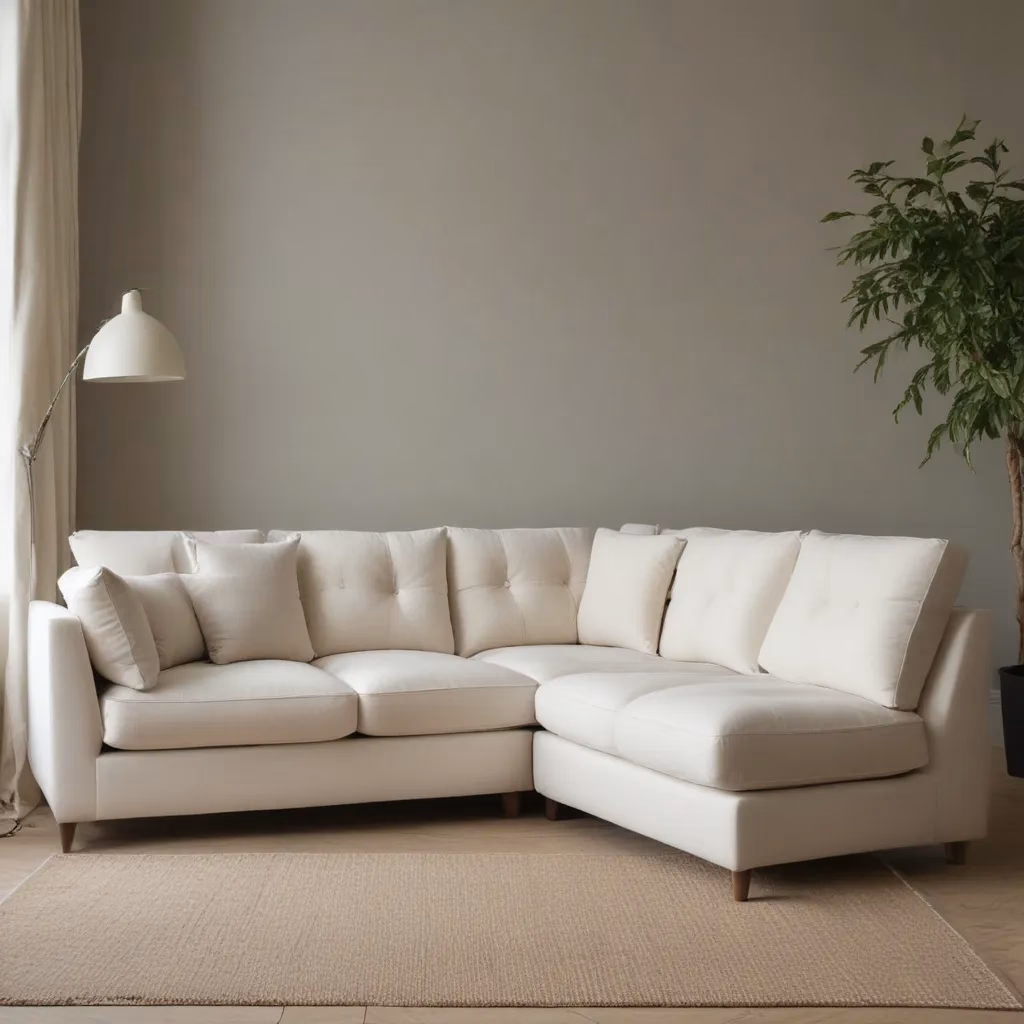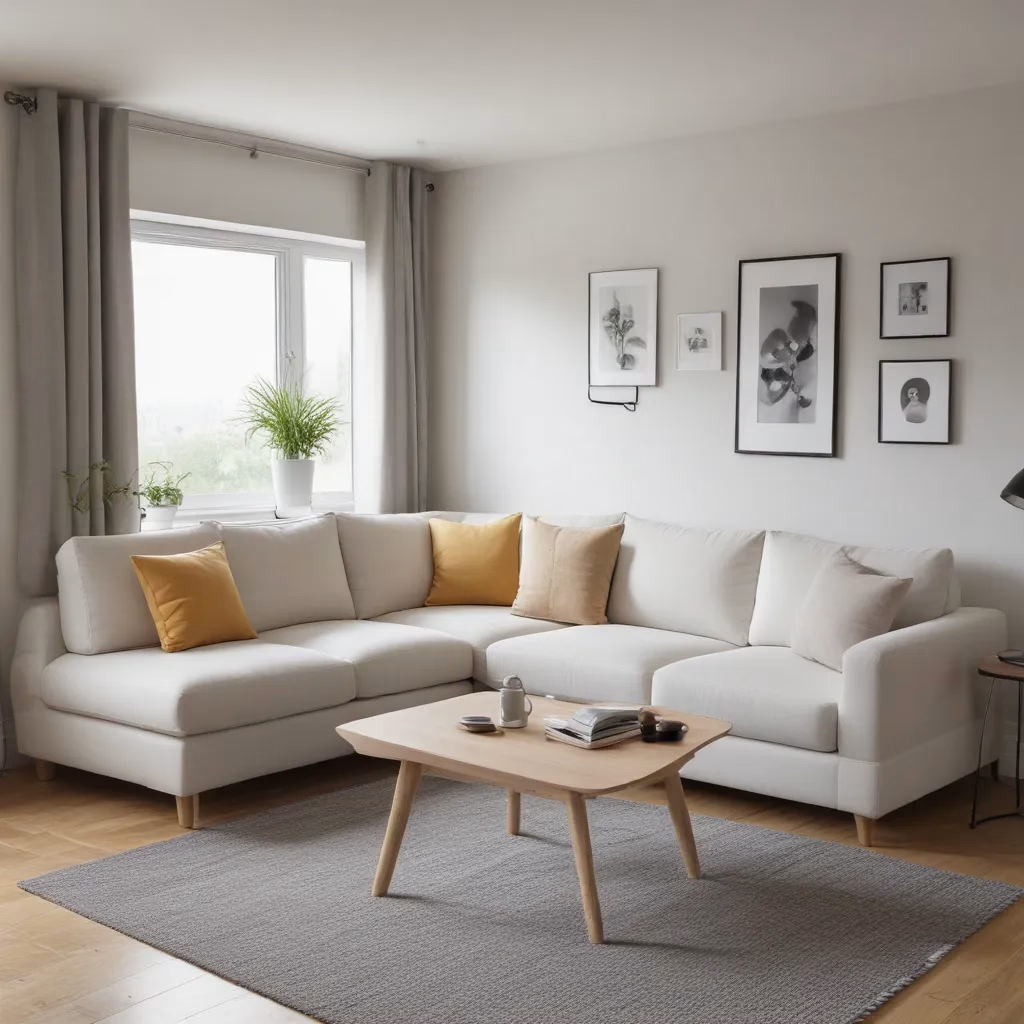
Understanding the Challenge of Small Spaces
In the United Kingdom, where living spaces are often compact, particularly in urban areas, making the most of every square metre is essential. Many homeowners and renters face the challenge of fitting a comfortable bed into a small bedroom or studio flat. This challenge becomes even more pronounced when dealing with awkward layouts or tight corners.
The need for space-saving solutions has driven innovation in furniture design, especially in bed and storage options. Designers and manufacturers have responded to this demand by creating clever, multi-functional pieces that maximise floor space without compromising on comfort or style.
Understanding the specific constraints of your room is the first step in finding the right space-saving bed solution. Consider factors such as the room’s dimensions, the position of windows and doors, and any architectural features that might affect furniture placement. By taking a methodical approach to space planning, you can identify the best areas for your bed and other essential furniture items.
Innovative Bed Designs for Compact Spaces
Murphy Beds: The Classic Space-Saver
Murphy beds, also known as wall beds, have been a popular space-saving solution for decades. These beds fold up against the wall when not in use, freeing up valuable floor space during the day. Modern Murphy beds come in various styles and sizes, from single to king, and can be integrated with shelving units or desks for added functionality.
The mechanism of Murphy beds has improved significantly over the years, making them easier to operate and more reliable. Many models now feature gas pistons or counterbalance systems that allow for smooth and effortless folding and unfolding. This makes them suitable for users of all ages and physical abilities.
When choosing a Murphy bed, consider the overall height of your room, as these beds require vertical clearance when folded down. Some models are designed to fold horizontally, which may be a better option for rooms with lower ceilings.
Loft Beds: Elevating Sleep to New Heights
Loft beds are an excellent option for maximising floor space in rooms with high ceilings. By elevating the sleeping area, you create usable space underneath for a desk, seating area, or storage. This arrangement is particularly popular in studio flats and children’s rooms.
Modern loft beds come in various designs, from minimalist metal frames to robust wooden structures. Some models incorporate built-in ladders or stairs, which can double as storage units. When selecting a loft bed, pay close attention to the weight capacity and the quality of the frame to ensure safety and durability.
For adults considering a loft bed, look for models with reinforced frames and higher weight limits. Some manufacturers offer loft beds specifically designed for adult use, with more substantial construction and sophisticated styling.
Sofa Beds: Dual-Purpose Comfort
Sofa beds have come a long way from the uncomfortable pull-out models of the past. Today’s sofa beds offer genuine comfort both as seating and sleeping surfaces. They are an ideal solution for living rooms that need to double as guest bedrooms or for studio flats where space is at a premium.
When shopping for a sofa bed, pay attention to the mattress quality and the ease of the folding mechanism. Look for models with memory foam mattresses or those that use a platform base rather than a traditional spring system for better support. Some sofa beds also feature storage compartments, providing an extra space to stow bedding when not in use.
Consider the overall dimensions of the sofa bed both when extended and folded. Ensure that you have enough clearance to fully open the bed without obstruction from other furniture or walls.
Maximising Corner Spaces with Clever Bed Designs
Corner Beds: Tailored to Fit
Corner beds are specifically designed to make use of awkward corner spaces in bedrooms. These L-shaped beds fit snugly into corners, maximising floor space while providing a comfortable sleeping area. Some corner bed designs incorporate storage drawers or shelving units within the frame, further enhancing their space-saving capabilities.
When considering a corner bed, take precise measurements of your room’s corners to ensure a proper fit. Pay attention to any skirting boards or uneven walls that might affect the bed’s placement. Some manufacturers offer customisable corner beds that can be adjusted to fit your specific room dimensions.
Fold-Down Corner Beds: Hidden Comfort
For those who need to completely free up floor space during the day, fold-down corner beds offer an innovative solution. These beds are mounted to the wall and fold down diagonally into the corner when needed. When not in use, they can be folded up flush against the wall, often resembling a cabinet or shelving unit.
Fold-down corner beds require careful installation to ensure they are securely mounted to the wall. It’s advisable to hire a professional for installation, especially if you’re dealing with older properties or non-standard wall constructions.
Trundle Beds: Double the Sleeping Space
Trundle beds are an excellent option for corner spaces, especially in children’s rooms or guest rooms. A trundle bed consists of two beds, with one tucked underneath the other. The lower bed can be rolled out when needed, providing an extra sleeping space without permanently taking up floor area.
When choosing a trundle bed for a corner space, look for models with smooth-rolling casters to ensure easy deployment on various flooring types. Some trundle beds also feature pop-up mechanisms that raise the lower bed to the same height as the main bed, creating a larger sleeping surface.
Integrating Storage Solutions with Corner Beds
Under-Bed Storage Systems
Making use of the space under the bed is crucial in small rooms. Many corner bed designs incorporate built-in drawers or lift-up storage compartments. These storage solutions are ideal for keeping seasonal clothing, extra bedding, or rarely used items out of sight but easily accessible.
When selecting a bed with under-bed storage, consider the depth of the drawers and the ease of access. Some models feature hydraulic lift mechanisms that make it easy to access the entire under-bed space.
Headboard Storage Options
Headboards can do more than just provide support for your pillows. Many corner bed designs feature headboards with integrated shelving, drawers, or cabinets. This vertical storage can be used for books, decorative items, or even as a replacement for bedside tables in very tight spaces.
Look for headboard designs that complement your room’s style while providing practical storage solutions. Some modular headboard systems allow you to customise the configuration of shelves and cabinets to suit your specific needs.
Wall-Mounted Storage Solutions
When floor space is at a premium, wall-mounted storage becomes essential. Consider installing floating shelves or wall-mounted cabinets above or around your corner bed. These can provide additional storage without encroaching on the limited floor area.
When planning wall-mounted storage, ensure that the fixtures are securely anchored to the wall and positioned at a height that doesn’t interfere with sitting up in bed or getting in and out of the bed comfortably.
Choosing the Right Materials for Space-Saving Beds
The choice of materials for your space-saving bed can significantly impact both its functionality and the overall aesthetic of your room. Here’s a comparison of common materials used in space-saving bed construction:
| Material | Pros | Cons | Best For |
|---|---|---|---|
| Wood | Warm appearance, durable, can be painted or stained | Can be heavy, may warp in humid conditions | Traditional or rustic interiors |
| Metal | Lightweight, strong, often less expensive | Can feel cold, may squeak over time | Modern or industrial-style rooms |
| MDF/Particleboard | Cost-effective, consistent finish | Less durable than solid wood, can chip or peel | Budget-conscious buyers, shorter-term use |
| Plywood | Strong, lightweight, resistant to warping | Can have a utilitarian appearance if not finished well | DIY projects, custom builds |
When selecting materials, consider not only the appearance but also the weight, especially for Murphy beds or loft beds that need to support significant loads. Opt for high-quality hardware and mechanisms to ensure smooth operation and longevity of your space-saving bed.
Comfort Considerations for Compact Beds
While saving space is important, it shouldn’t come at the expense of comfort. Here are some key factors to consider when selecting a mattress for your space-saving bed:
-
Thickness: For Murphy beds and sofa beds, look for mattresses between 15-20 cm thick. These provide adequate support without being too bulky when folded.
-
Material: Memory foam mattresses are often a good choice for space-saving beds as they can be compressed without losing their shape. However, hybrid mattresses that combine foam and pocket springs can offer a good balance of comfort and support.
-
Firmness: Choose a firmness level that suits your sleeping style. Medium-firm mattresses are often versatile enough to accommodate different preferences, especially important for guest beds.
-
Temperature regulation: In compact spaces, temperature control can be an issue. Look for mattresses with cooling technologies or breathable materials to ensure a comfortable night’s sleep.
-
Durability: For beds that fold or transform, durability is crucial. Opt for mattresses designed specifically for your type of space-saving bed to ensure longevity.
Remember that the best mattress will depend on individual preferences and the specific design of your space-saving bed. It’s worth investing time in testing different options to find the right balance of comfort and practicality.
Creating the Illusion of Space Around Corner Beds
Even with the most efficient space-saving bed, a small room can still feel cramped if not properly designed. Here are some tips to create the illusion of more space:
-
Use light colours: Paint walls in light, neutral tones to reflect light and make the room feel more open. This doesn’t mean you have to avoid all dark colours; strategic use of darker shades can add depth to the room.
-
Incorporate mirrors: Strategically placed mirrors can reflect light and create the illusion of more space. Consider a large mirror on the wall opposite the bed or mirrored wardrobe doors.
-
Opt for multi-functional furniture: Choose bedside tables or desks that can serve multiple purposes. For example, a small desk that can double as a vanity or a bedside table with built-in charging stations.
-
Use vertical space: Install tall, narrow bookcases or floating shelves to draw the eye upward and make use of wall space.
-
Choose appropriate lighting: Use a combination of ambient, task, and accent lighting to create depth and highlight different areas of the room. Wall-mounted reading lights can save space on bedside tables.
-
Keep the floor visible: Where possible, choose furniture with legs to keep floor space visible, creating a sense of openness.
-
Use transparent materials: Consider acrylic or glass furniture pieces to maintain visual openness. A glass-topped desk or acrylic chair can provide function without visual weight.
By combining these design strategies with your space-saving bed, you can create a room that feels open, airy, and much larger than its actual dimensions.
Maintenance and Care for Space-Saving Beds
To ensure the longevity and smooth operation of your space-saving bed, regular maintenance is essential. Here are some tips for keeping your bed in top condition:
-
Regular cleaning: Vacuum or dust all surfaces regularly, including under the bed and in any storage compartments. For upholstered parts, follow the manufacturer’s cleaning instructions.
-
Lubrication: For beds with moving parts, such as Murphy beds or trundle beds, periodically lubricate hinges and mechanisms according to the manufacturer’s recommendations.
-
Tightening hardware: Regularly check and tighten any visible screws or bolts, especially on loft beds or bunk beds.
-
Mattress care: Rotate or flip the mattress as recommended by the manufacturer to ensure even wear. For folding beds, air out the mattress periodically to prevent moisture buildup.
-
Weight limits: Always adhere to the weight limits specified by the manufacturer, particularly for loft beds and Murphy beds.
-
Professional inspection: For complex mechanisms like wall beds, consider having a professional inspection every few years to ensure all components are functioning correctly.
By maintaining your space-saving bed properly, you can ensure it remains a comfortable and reliable part of your home for years to come.
Personalising Your Space-Saving Bed Area
Just because your bed needs to be functional doesn’t mean it can’t reflect your personal style. Here are some ways to add character to your space-saving bed setup:
-
Customised bedding: Choose bedding that complements your room’s colour scheme. For Murphy beds or sofa beds, consider bedding that’s easy to store and quick to set up.
-
Decorative pillows and throws: Add texture and colour with decorative pillows and throws. These can be easily removed when the bed needs to be folded away.
-
Wall art: Hang artwork or photos above the bed to create a focal point. For Murphy beds, consider art that’s visible when the bed is folded up.
-
Lighting features: Add personality with unique lighting fixtures. Consider clip-on bed lights for loft beds or wall-mounted sconces for corner beds.
-
Rugs: A small area rug next to the bed can add warmth and define the sleeping area, especially in studio flats.
-
Plants: Incorporate small plants or hanging terrariums to bring life to the space without taking up valuable floor area.
Remember, the key to personalising a small space is to choose items that serve both a functional and aesthetic purpose. By carefully selecting each element, you can create a sleeping area that’s not only space-efficient but also a true reflection of your personal style.
Conclusion: Embracing Compact Living Without Compromise
Fitting a bed into a tight corner or small room doesn’t have to mean sacrificing style, comfort, or functionality. With the wide range of innovative space-saving bed designs available today, it’s possible to create a sleeping area that maximises every centimetre of your room while still providing a comfortable and inviting space.
From Murphy beds that disappear into the wall during the day to clever corner bed designs that make use of awkward spaces, there’s a solution for every room layout and personal preference. By combining these space-saving beds with smart storage solutions and thoughtful design choices, you can transform even the smallest bedroom into a multi-functional haven.
Remember that the key to successful small space living is flexibility and creativity. Don’t be afraid to think outside the box and consider unconventional solutions. With careful planning and the right furniture choices, you can create a bedroom that feels spacious, comfortable, and uniquely yours, regardless of its size.
For more inspiration and a wide selection of space-saving furniture options, visit Sofa Spectacular. Their range of innovative furniture solutions can help you make the most of your living space, whether you’re furnishing a compact city flat or maximising space in a family home.



